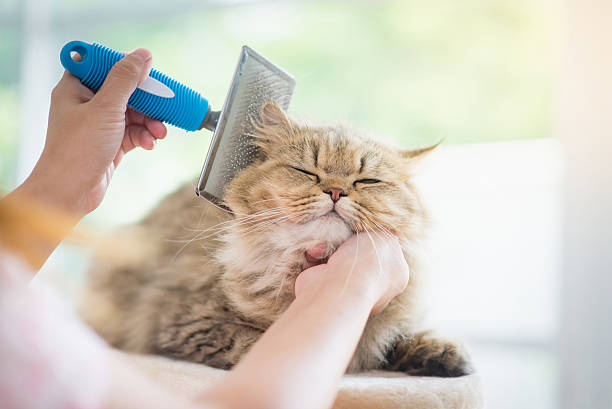The Ultimate Guide to Dog Grooming: Tips for a Shiny Coat and Healthy Skin

Introduction
Grooming is an essential part of dog care that not only helps maintain a dog’s appearance but also promotes overall health. Regular grooming ensures a shiny coat, healthy skin, and the well-being of your furry friend. This guide will provide comprehensive tips and techniques for effective dog grooming, covering everything from brushing to bathing, and addressing common grooming challenges.
1. Understanding Your Dog’s Coat Type
Before diving into grooming techniques, it’s important to understand your dog’s coat type. Different breeds have different grooming needs:
- Short-Coated Dogs: Breeds like Beagles and Boxers have short, sleek coats that require minimal grooming. Regular brushing helps remove loose hair and dirt.
- Long-Coated Dogs: Breeds such as Golden Retrievers and Collies have long fur that can become tangled and mats easily. They require frequent brushing to keep their coats free of knots and debris.
- Curly-Coated Dogs: Poodles and Portuguese Water Dogs have curly or wavy coats that need regular grooming to prevent matting and maintain their unique texture.
2. Brushing Your Dog’s Coat
Brushing is a fundamental grooming task that helps to:
- Reduce Shedding: Regular brushing removes loose hair, which helps to minimize shedding around the house.
- Prevent Matting: For long-haired breeds, brushing prevents the formation of mats and tangles that can lead to skin irritation.
- Promote Healthy Skin: Brushing distributes natural oils from the skin throughout the coat, keeping it shiny and healthy.
Brushing Tips:
- Choose the Right Brush: Use a slicker brush for long-haired dogs and a rubber curry brush for short-haired breeds.
- Brush Regularly: Aim to brush your dog’s coat at least once a week. Long-haired dogs may need daily brushing.
- Be Gentle: Start brushing at the tips of the hair and work your way down to avoid pulling on tangled areas.
3. Bathing Your Dog
Bathing is crucial for keeping your dog clean and fresh. However, overbathing can strip essential oils from the coat, leading to dryness and irritation.
Bathing Tips:
- Use Dog-Specific Shampoos: Choose shampoos formulated for dogs to avoid irritation. There are also options for sensitive skin and hypoallergenic needs.
- Temperature Matters: Use lukewarm water to ensure your dog’s comfort during the bath.
- Rinse Thoroughly: Make sure to rinse all shampoo out of your dog’s coat to prevent residue from causing skin issues.
Frequency of Baths:
- Short-Coated Dogs: Bath every 6-8 weeks or as needed.
- Long-Coated Dogs: Bath every 4-6 weeks, or more frequently if they get dirty.
4. Nail Trimming
Regular nail trimming is essential for your dog’s comfort and health. Overgrown nails can cause pain and lead to issues with walking.
Nail Trimming Tips:
- Use the Right Tools: Invest in quality dog nail clippers or a grinder. Ensure they are suitable for your dog’s nail size and type.
- Trim Gradually: Trim small amounts at a time to avoid cutting into the quick (the blood vessel inside the nail).
- Praise and Reward: Make the experience positive by giving treats and praise.
Signs of Overgrown Nails:
- Clicking Sound: Nails make a clicking sound on hard floors.
- Discomfort: Your dog shows signs of discomfort or reluctance to walk.
5. Ear Cleaning
Maintaining clean ears helps prevent infections and discomfort. Some breeds are more prone to ear infections due to their ear structure.
Ear Cleaning Tips:
- Use a Dog-Safe Cleaner: Choose a cleaner specifically designed for dogs’ ears.
- Avoid Cotton Swabs: Use a damp cotton ball to clean the outer ear, avoiding inserting anything into the ear canal.
- Check for Signs of Infection: Look out for redness, odor, or excessive scratching.
Frequency:
- Weekly Check-Ups: Inspect your dog’s ears regularly and clean as needed.
6. Dental Care
Dental hygiene is often overlooked but is crucial for overall health. Poor dental care can lead to gum disease and tooth loss.
Dental Care Tips:
- Brush Regularly: Use a toothbrush and toothpaste designed for dogs. Aim to brush their teeth several times a week.
- Dental Chews: Provide dental chews or toys that help reduce plaque buildup.
- Regular Vet Checkups: Schedule professional dental cleanings as recommended by your vet.
7. Skin and Coat Health
A healthy coat and skin are indicators of overall well-being. Ensure your dog’s skin remains healthy by:
- Feeding a Balanced Diet: Quality food rich in omega-3 and omega-6 fatty acids supports skin health and coat shine.
- Regular Vet Checkups: Routine visits help identify and address skin conditions early.
Common Skin Issues:
- Allergies: Look for signs of itching or redness.
- Parasites: Check for fleas or ticks that can affect the skin.
8. Handling Grooming Challenges
Some dogs may be anxious or resistant to grooming. Address these challenges with patience and positive reinforcement.
Handling Tips:
- Start Early: Introduce grooming routines when your dog is young to build familiarity.
- Keep Sessions Short: Gradually increase grooming time to avoid overwhelming your dog.
- Use Treats and Praise: Reward your dog for calm behavior during grooming.
Conclusion
Regular grooming is key to maintaining a dog’s health and appearance. By understanding your dog’s coat type, brushing regularly, bathing appropriately, trimming nails, cleaning ears, and caring for dental and skin health, you’ll ensure a shiny coat and healthy skin for your furry companion. With patience and the right techniques, grooming can become a positive and enjoyable experience for both you and your dog.




